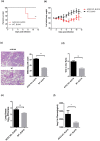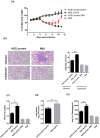Angiotensin-converting enzyme 2 inhibits lung injury induced by respiratory syncytial virus
- PMID: 26813885
- PMCID: PMC4728398
- DOI: 10.1038/srep19840
Angiotensin-converting enzyme 2 inhibits lung injury induced by respiratory syncytial virus
Abstract
Respiratory syncytial virus (RSV) infection is a major cause of severe lower respiratory illness in infants and young children, but the underlying mechanisms responsible for viral pathogenesis have not been fully elucidated. To date, no drugs or vaccines have been employed to improve clinical outcomes for RSV-infected patients. In this paper, we report that angiotensin-converting enzyme-2 (ACE2) protected against severe lung injury induced by RSV infection in an experimental mouse model and in pediatric patients. Moreover, ACE2 deficiency aggravated RSV-associated disease pathogenesis, mainly by its action on the angiotensin II type 1 receptor (AT1R). Furthermore, administration of a recombinant ACE2 protein alleviated the severity of RSV-induced lung injury. These findings demonstrate that ACE2 plays a critical role in preventing RSV-induced lung injury, and suggest that ACE2 is a promising potential therapeutic target in the management of RSV-induced lung disease.
Figures





References
Publication types
MeSH terms
Substances
LinkOut - more resources
Full Text Sources
Other Literature Sources
Medical
Molecular Biology Databases

